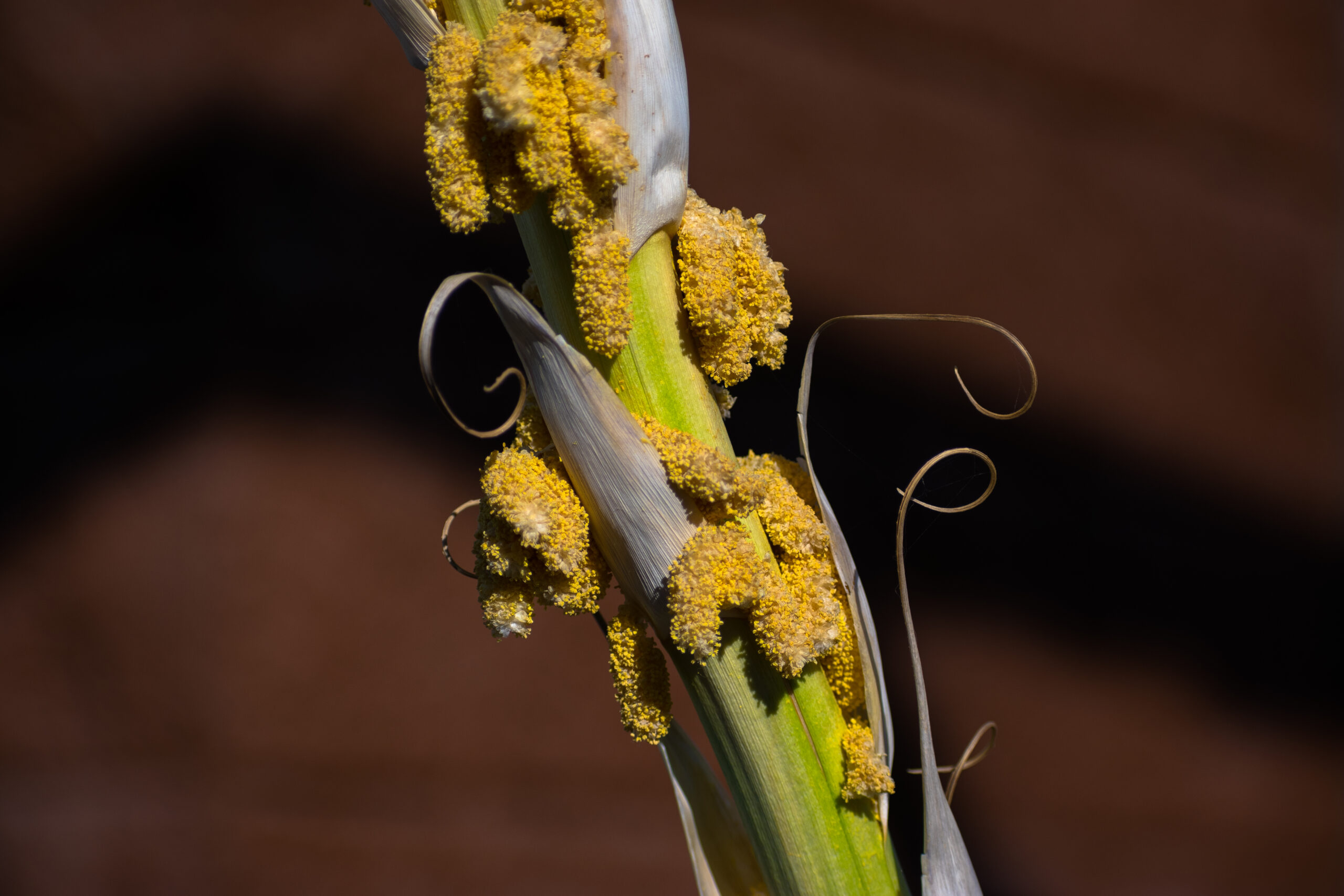
Common Crop Diseases India Introduction
Crop health is the foundation of successful agriculture, but Indian farmers are constantly under threat of succumbing to widespread crop diseases India. Crop disease management and loss control require early detection and prompt intervention. This guide will show you how to identify the most prevalent diseases, diagnose the signs of crop infestation, and implement hands-on strategies to protect your crop.
Understanding Common Crop Diseases India
What Are Crop Diseases?
Common crop diseases India refers to those diseases which are either caused by pathogens like fungi, bacteria, viruses, and nematodes. These can infect every part of the plant like leaves, stem, root, and fruit, hence lowering growth, and yield, and in worst cases, the crop fails.
Why Early Detection Matters
Early detection of infection symptoms in crops can be achieved, allowing farmers to act in real-time and thereby prevent disease outbreaks and reduce the extensive use of chemical treatments. It is the signature of effective crop disease management.
Main Common Crop Diseases India
1. Leaf Spot Diseases
Leaf spot is the most prevalent Indian crop disease. It is due to yellow halo round or irregular leaf spots. It leads to defoliation and excessive loss of yield if not controlled.
- Signs of Infection in Crop: Early defoliation, leaf spots, and yellow rings.
- Management: Encourage crop rotation, spacing of crops, and spray fungicides if needed.
2. Powdery Mildew
A lot of crops get affected by inflectual Powdery mildew and it happens mostly in warm and humid conditions. It appears as a white, powdery coating on leaves and stems.
- Symptoms of diseases in Crops: There are powdery white patches on the leaves, even on the stem leaves, and sometimes on the fruit.
- Management: Seed-resistant varieties of crops, ensure proper aeration, and spray with the advised fungicides.
3. Rust Diseases
Rusts, for instance, stem rust and leaf rust, are some of India’s principal wheat and other cereals diseases. Such rampant crop diseases India can lead to a great deal of yield loss.
- Infection Signs in Crops: There are reddish-brown or black pustules on stems and leaves, weakening the stems and lodging.
- Management: Start to grow resistant varieties, and even remove any of the volunteer plants. Also, the usage of fungicides as per the guidelines would be beneficial.
4. Mosaic Viruses
Mosaic viruses are rampant crop viruses in India producing mottling and distortion of leaves, and stunted plant growth.
- Infection symptoms in the crops: Mottled leaf mottle, leaf curling, stunted plant growth.
- Management: Plant virus-resistant seeds, insect vector control, field sanitation.
5. Blight Diseases
Early and late blights can travel quickly with a destructive effect, especially on potatoes and tomatoes.
- Symptoms of infection on the crops: There are dark lesions on leaves, stems, and fruits; rapid wilting; and tissue death.
- Management: Practice crop rotation, use resistant varieties, and apply fungicides preventively.
6. Bacterial Diseases
Bacterial diseases cause wilting, canker, and rotting of the fruit in most crops.
- Symptoms of infection on the crop: Water-soaked canker appearance, wilting, and fruit rot.
- Management: Disease-free seeds can be used, sprayed with copper bactericides, and sanitation observed.
7. Nematode Infestations
Nematodes are root-knot worms infecting crop roots, among the most underused general crop disease India.
- Symptoms of infection on the crop: There is yellowing, a kind of stunted growth, swelling of the roots, and a total poor response to fertilizers.
- Management: Rotate crops, use nematode-resistant varieties, and apply organic amendments.
Signs of Crop Infection: What to Look For
Early identification of signs of infection in crops is vital for successful crop disease management. Following are some universal symptoms to watch out for:
- Leaf spotting or mottling
- Wilting or droopy leaves
- A powdery or fuzzy kind of coating
- Abnormal growths or swellings
- Rotting of roots, stems, or fruit
- Poor growth or yield
Checking your crops regularly enables you to detect these signs of infection in crops before it goes on.
Crop Disease Management: Prevention and Early Treatment
Integrated Disease Management
Effective crop disease management is achieving a union of cultural, biological, and chemical practices:
- Opt for Cultural Practices: One can rotate the crops, use clean seeds, and remove any of the diseased plants to break the cycle of spreading disease on the crops.
- Bio protection: Use beneficial microbes or natural predators to suppress the pathogens.
- Chemical Control: One can apply fungicides or bactericides judiciously, following expert recommendations.
Best Practices for Early Treatment
- Monitor fields on a frequent basis for early signs of crop infection.
- Isolate the plant that is affected to prevent any spread of the disease.
- Apply treatments promptly, delays can lead to widespread infection.
- Follow label instructions for all chemical applications to avoid resistance and environmental harm.
Common Crop Diseases India: Case Studies
Wheat Rust in India
Wheat rust, especially stem and leaf rust, remains a problem crop for Indian farmers. It occurs regularly in hot and moist areas with low temperatures. Integrated management, prudence in using resistant varieties, early application of fungicides, and sanitation of the crop, have worked in disease management and sustaining yields.
Okra Yellow Vein Mosaic
This disease is found all over India, especially during the rainy season. Vein yellowing, stunted growth of the plants, and deformed fruits are its features. Infection at young plant growth will result in a 94% loss of crops. Control is by whitefly vector control and planting resistant varieties.
Rice Blast
Rice blast is a ruinous fungal disease in India, which results in panicle and leaf blast lesions to reduce grain formation. Control includes the application of resistant varieties, burning the infected crop residues, and timely fungicide sprays.
Preventing Common Crop Diseases India
Tips for Farmers
- Select disease-resistant crops wherever possible.
- Begin incorporating crop rotation and finally break the cycle of disease.
- Weeding and clearance of plant waste to maintain field hygiene.
- Make sure there is proper irrigation, so as not to overwater and waterlog.
- Be mindful of the weather, most pathogens prefer specific weather.
- Train farm workers to recognize early signs of crop infection.
Frequently Asked Questions
The following are 10 FAQs on general crop diseases India, crop disease management, and crop infection signs:
1. What are the most common crop diseases in India?
There are a few common crop diseases that need urgent treatment. Bacterial infections, leaf spotting, mosaic viruses, powdery mildew, and blight diseases amongst others infect almost all crops and, if not controlled, result in a tremendous loss of yield.
2. How do I determine the early symptoms of crop infection?
Early symptoms of crop infection are unusual color patches or spots on leaves, wilting, dwarfish growth, abnormal swelling, fuzzy or powdery appearance, and soft rotting of plant tissues. Periodic interval field inspections facilitate early detection.
3. What are common crop diseases caused in India?
Some Indian crop diseases are due to fungi, bacteria, viruses, and nematodes (a type of phylum Nematoda worm) in India. Indian Weather factors such as humidity, temperature, and adverse field conditions are also the reasons for the occurrence of these common crop diseases.
4. Control of crop diseases: how do they prevent losses?
Crop diseases have to be managed with early detection, crop rotation, sowing of resistant crops, field sanitation, and fungicides or bactericides depending on the disease. All these methods dissuade the onset of diseases and guarantee crop production.
5. Cannot crop diseases be avoided without chemicals?
Yes, if cultural practices like the rotation of crops, sowing disease-free seeds, pulling out the disease-infected crops, and sowing disease-resistant crops are adopted, most of the diseases can be controlled. Biological control also reduces the utilization of chemicals.
6. Which are the most vulnerable crops to rust and blight diseases?
Potatoes, tomatoes, and wheat are especially susceptible to blight and rust. These are highly likely to spread and destroy fields if not controlled in the early stages.
7. What is the role of weather conditions in causing the spread of crop disease?
It is known to grow and thrive with high humidity, regular rain, and temperate climate conditions.
Outbreaks are forecasted and prevented through weather observation.
8. How do I control viral plant diseases such as mosaic virus?
Viral diseases should be controlled best through the utilization of virus-resistant seeds, management of insect vectors (e.g., whiteflies and aphids), and uprooting of plants.Crop viral infection cannot be treated directly.
9. Are there early disease detection technologies?
Yes, technologies such as remote sensing, imaging, and diagnostic kits can be utilized in detecting early signs of the infection of the crops and support the implementation of timely crop disease management interventions.
10. What to do if I notice symptoms of a new or unknown disease in my crops?
Isolate the affected plants, consult local agricultural experts, and send samples to a plant pathology lab if possible. Early professional advice is crucial for an effective crop disease management program and prevention of further spread.
Conclusion
Crop pests India is a significant threat to agricultural food security and farmers’ incomes.
However, with vigilant monitoring, early detection of signs of crop infection, and integrated crop disease management strategies, it is possible to minimize losses and ensure healthy harvests. Stay proactive, keep learning about new threats, and adopt best practices to protect your crops throughout the growing season.
